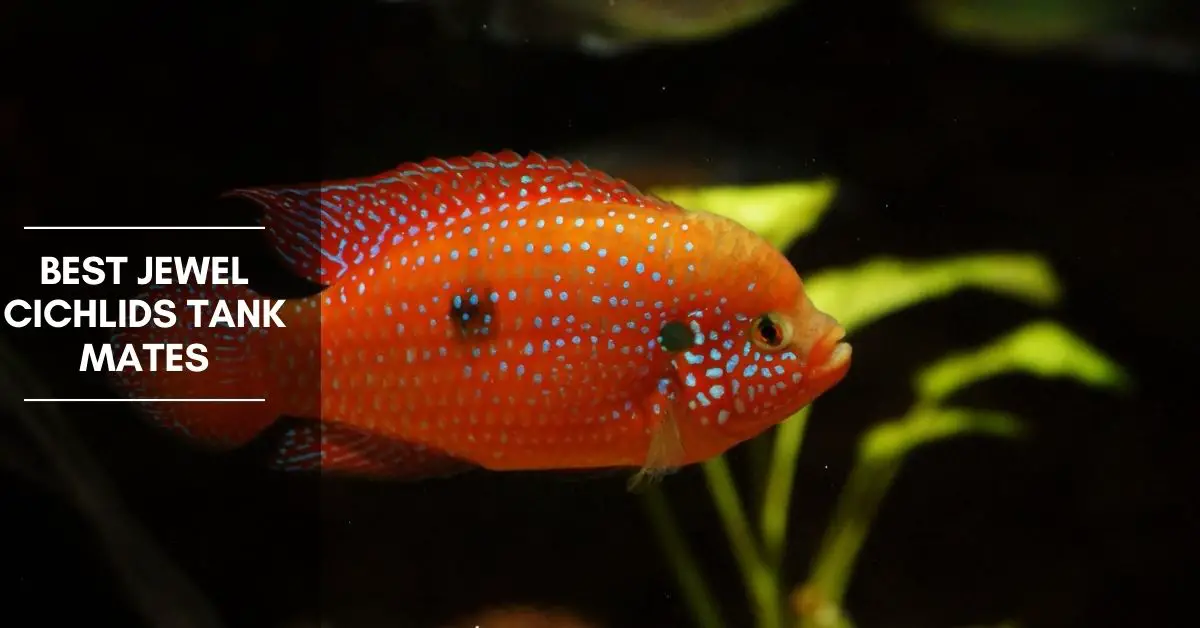Jewel cichlids are fun freshwater fish that don’t get nearly enough of the recognition that they deserve. All things considered, they are pretty popular in theory but actually seeing them in the tank of hobbyists is another story.
This is because jewel cichlids are considered to be somewhat aggressive. Don’t let that scare you away from adding these gorgeous fish to your aquarium, though! There are a few really great tank mates that you could keep with them.
What are they, you ask? Let’s find out!
Here are the best jewel cichlid tank mates.
9 of The Best Tank Mates for Jewel Cichlids
Clown Loaches
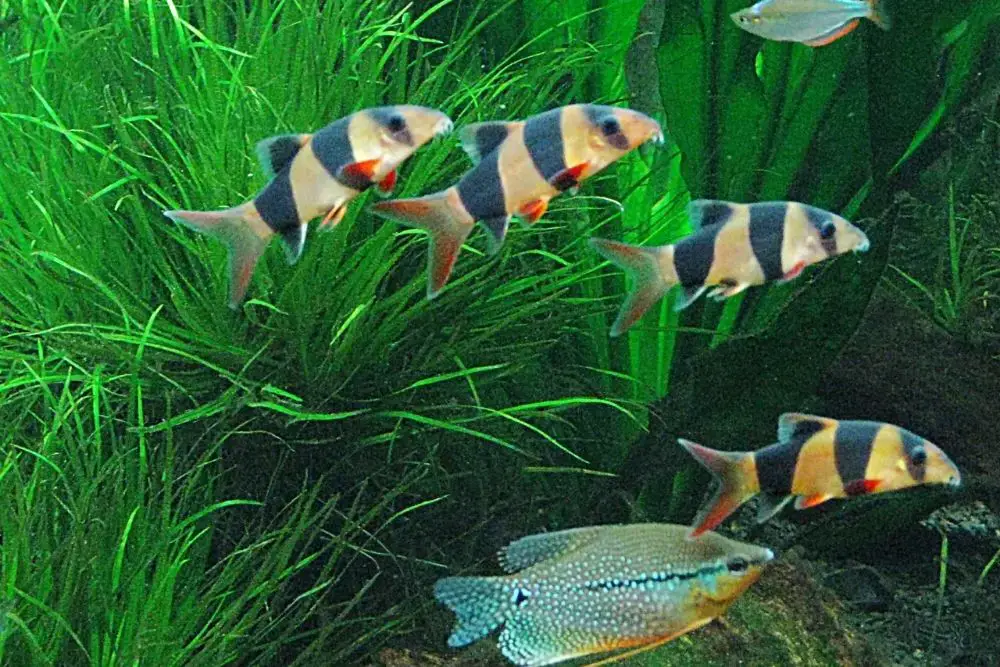
Clown loaches are semi-aggressive fish, much like jewel cichlids themselves. They are yellow and black striped with orange tipped-fins and cute cat-like whiskers. These fish are relatively peaceful despite their ability to be aggressive towards fish who are aggressive towards them first. Most of the time, however, clown loaches are more than happy to mind their own business.
They are great for controlling unwanted populations of snails and are definitely interesting to look at. In addition, they are very active and are never in one place for long.
Giant Danios
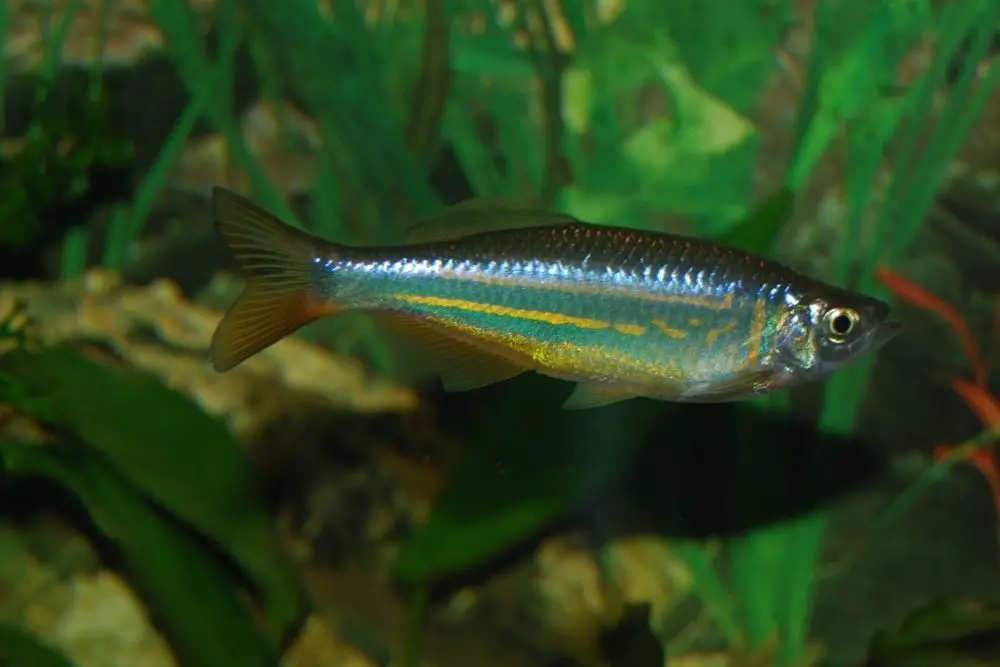
Giant danios are tropical fish that grows to 4-6 inches and is recognized by their zebra-like stripes. You may have seen these fish in stores, but chances are that you’ve actually seen the regular-sized danios, which are much smaller, averaging 2 inches maximum.
They are quick moving and do best in schools. They are also one of the fish on this list that is the least likely to pick a fight.
Plecos
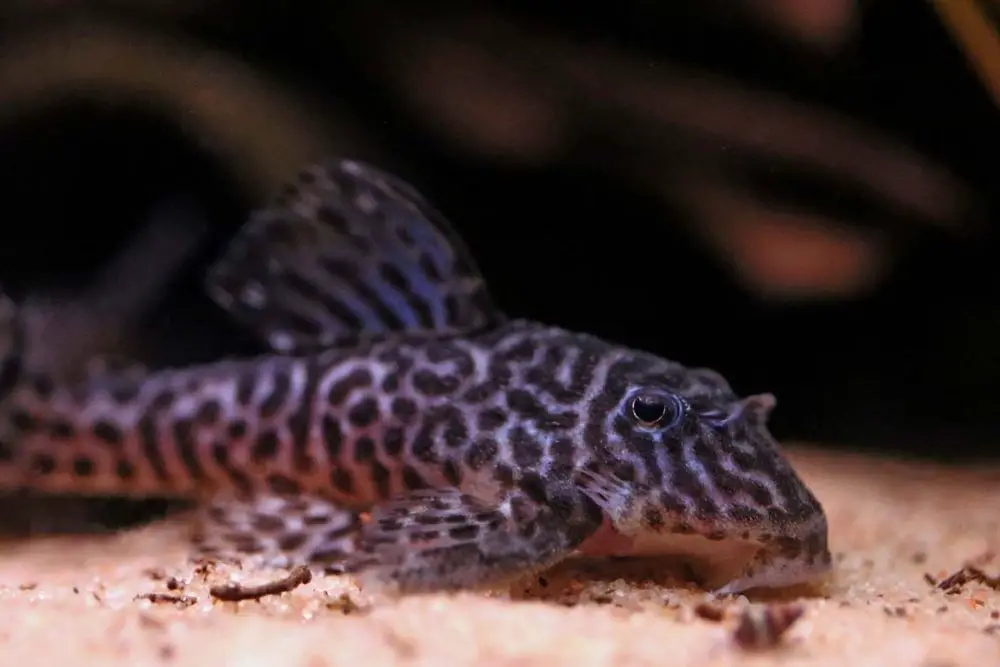
While the term “plecos” is general, it’s suitable when you’re talking about tank makes for cichlids. Generally speaking, cichlids and plecos almost never have any kind of interaction, since plecos are bottom dwellers and cichlids are mid-top level dwelling fish.
API STRESS ZYME Freshwater and Saltwater Aquarium Cleaning Solution 16-Ounce Bottle
API ACCU-CLEAR Freshwater Aquarium Water Clarifier 4-Ounce Bottle
30% OffTetra Chlorine Remover 3.38 Ounces, Conditions Aquarium Water for Use in Aquariums, 100ml
$10.95 (as of July 5, 2025 07:32 GMT +03:00 - More infoProduct prices and availability are accurate as of the date/time indicated and are subject to change. Any price and availability information displayed on [relevant Amazon Site(s), as applicable] at the time of purchase will apply to the purchase of this product.)Most species of plecos will do well in a jewel cichlid tank, but if you’re worried, opt for a larger species such as the common pleco or the blue phantom. Small plecos will generally do okay, too, since they’re usually hiding.
Electric Blue Acaras
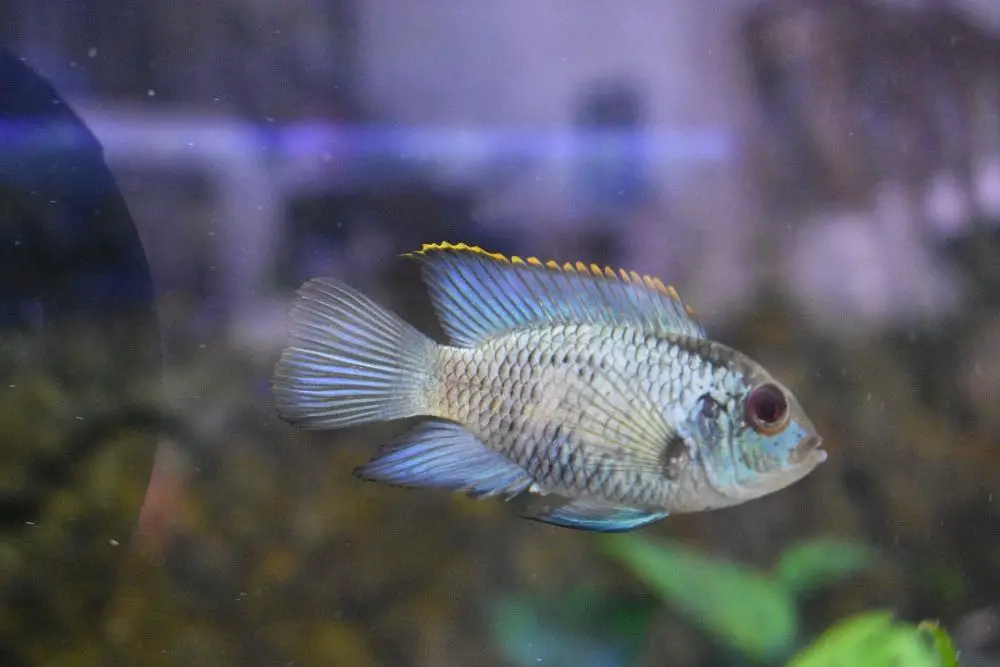
Electric blue acaras are some of the most beautiful fish in the aquarium community. They are generally very friendly species of cichlid that do well in community tanks with larger fish as well as those who are semi-aggressive thanks to their tendency to ignore others.
They are bright blue in color and get up to seven inches long. They enjoy digging and find a ton of enjoyment in uprooting live plants. These fish can be kept alone or in groups.
Redtail Shark
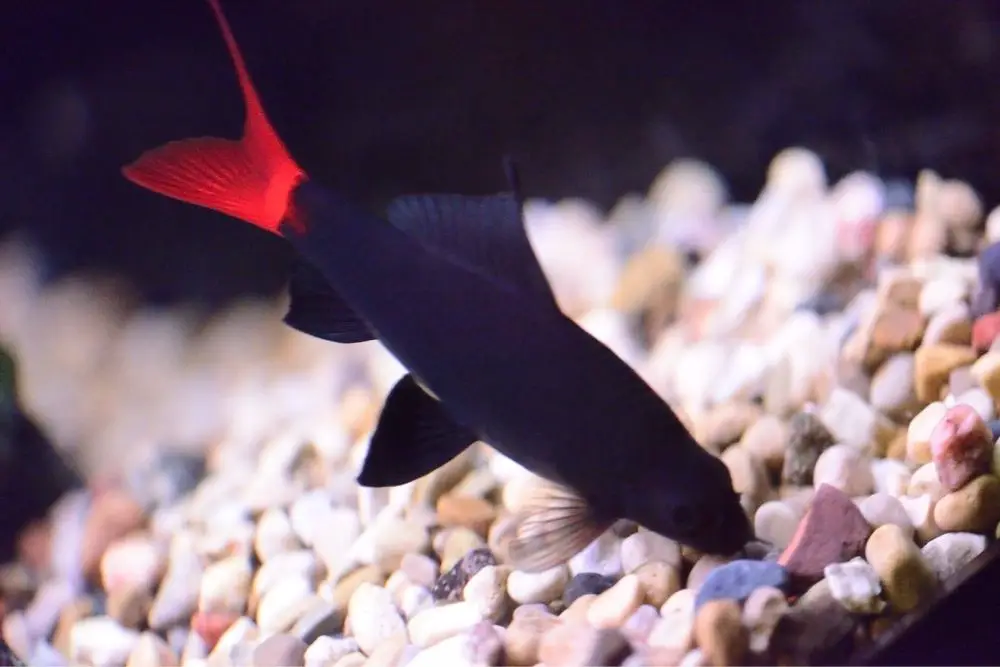
With stunning matte black bodies and bright orange tail, the red tail shark is a visually-appealing addition to any tank. As it just happens, red tails get along relatively well with jewel cichlids as well as a range of other cichlids, which makes them a good choice for a community cichlid tank.
They spend most of their time swimming within the lower portion of the water column and grazing along the bottom of the tank. Redtail sharks can get up to six inches long but average five inches.
Synodontis Catfish
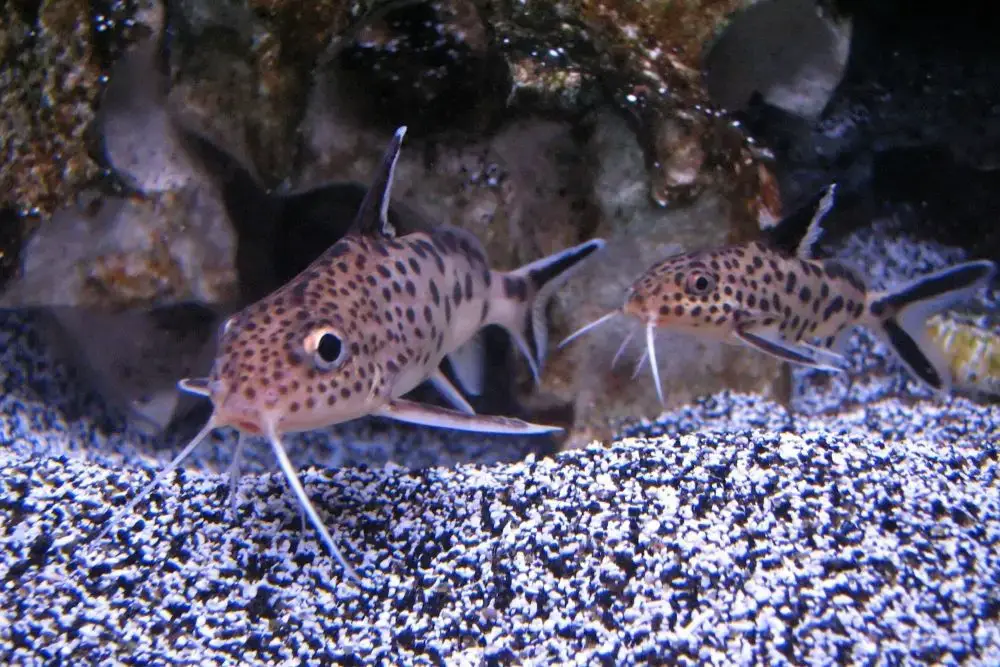
Synodontis catfish are bottom dwellers who would rather burry beneath rocks and tank decor than get into fights with cichlids; this is what makes them a good tank mate. Since they are bottom-dwelling, the two species of fish pay no mind to one another and things are generally peaceful within the tank.
This species of catfish is known for its spotted body and large eyes. It has a large, frilly top-fin and, of course, cat-like whiskers. It can reach sizes of up to ten inches when cared for correctly.
Rainbowfish
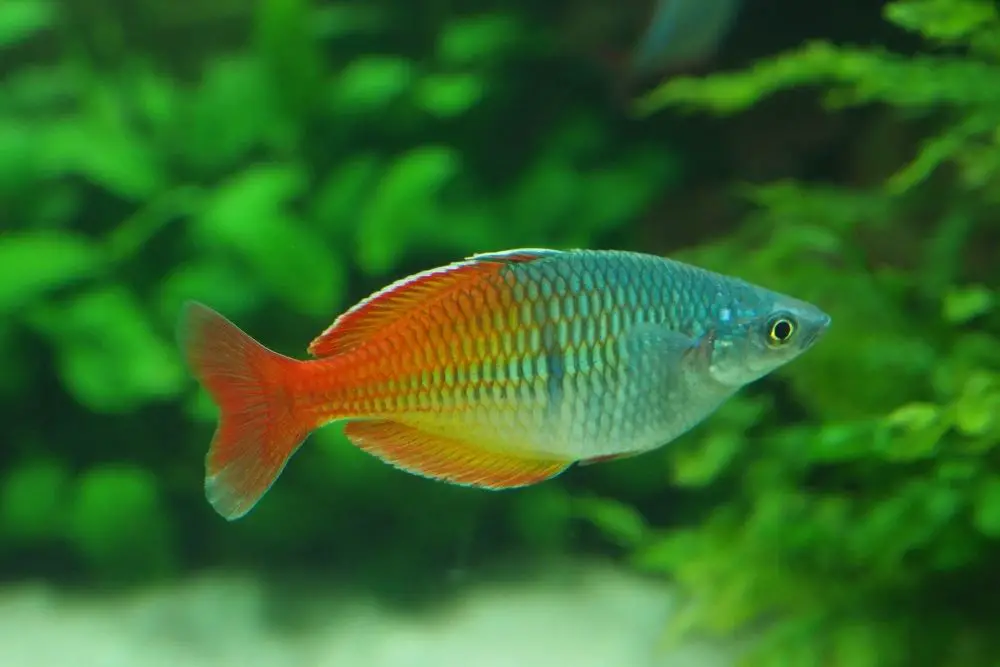
Jewel cichlids and rainbowfish can get along well. However, it’s important to ensure that these two species have enough room to swim without running into each other or crowding each there’s space. The rainbowfish need plenty of places to hide, as jewel cichlids often see them as free meals and will catch them when they can.
If you can get around the “easy-access-meal” concern, then these two species should get along famously. Rainbowfish are brightly colored and a joy to watch as they zoom around the tank. They are schooling fish that needs to be kept in small groups to thrive.
Leopard Bushfish
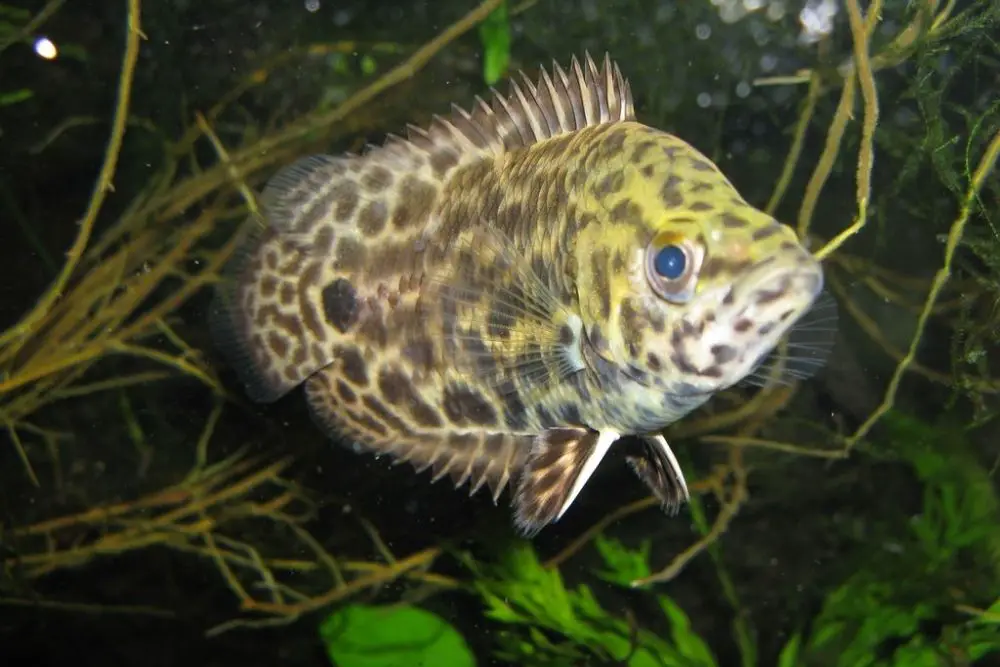
Leopard bushfish make a good match for jewel cichlids because they are semi-aggressive and can hold their own should the cichlid try to pick a fight. In addition to being hardy and able to protect themselves, the bushfish are gorgeous.
They are white with black, leopard-like spots and somewhat oval-shaped bodies. They have large eyes and look a lot like the ocean’s version of a real-life leopard, but are much smaller, coming in at a maximum of six inches.
Scavenger Catfish
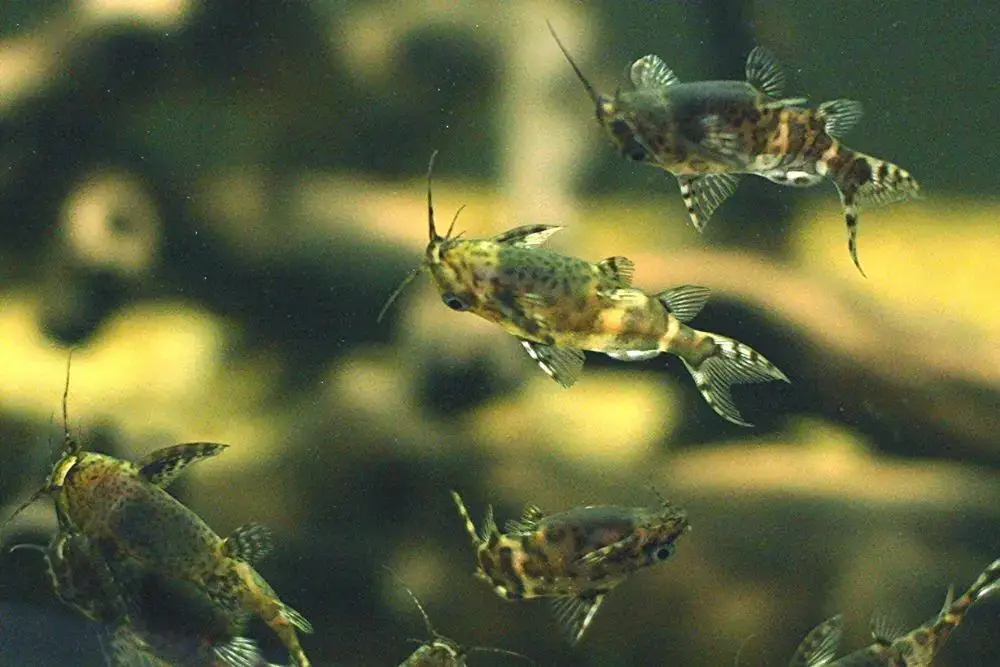
Another catfish recommendation, the scavenger catfish is famous for living peacefully alongside aggressive fish. Again, this is because it minds its own business and doesn’t bully or bother other fish.
This catfish can reach substantial sizes, with fish in captivity reportedly reaching up to a foot in length. This fish requires planted tanks with a sandy substrate and lots of places to hide.
Summary
With these awesome tank mates in mind, you’ll be able to curate a carefully-stocked fish tank that not only looks great but gets along well, too. When adding any fish into a tank, be sure to make sure that there’s enough room and that you aren’t overstocking your tank — regardless of whether your fish are aggressive or not.
In the case of jewel cichlids, who are known to be slightly aggressive, this is especially important. It’s also important to add the right fish, though, so to be on the safe side consider stocking the fish above with your jewels.
We can’t guarantee that there won’t be any problems, of course, because fish have their own personalities but from personal experience, the fish we mentioned seem to live peacefully with jewels for the most part.

Hi, my name is Sean, and I’m the primary writer on the site. I’m blogging mostly about freshwater and saltwater aquariums, fish, invertebrates, and plants. I’m experienced in the fishkeeping hobby for many years. Over the years I have kept many tanks, and have recently begun getting more serious in wanting to become a professional aquarist. All my knowledge comes from experience and reading forums and a lot of informative sites. In pursuit of becoming a professional, I also want to inspire as many people as I can to pick up this hobby and keep the public interest growing.
Read more about Sean.
Please join also my Facebook group.

